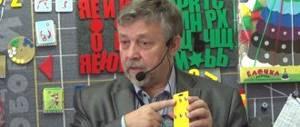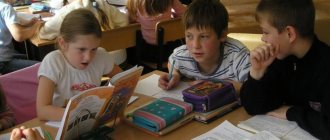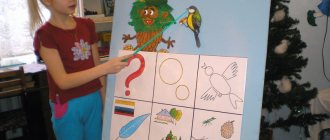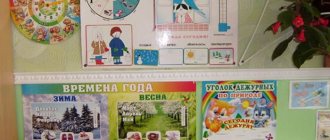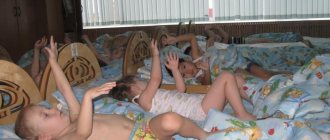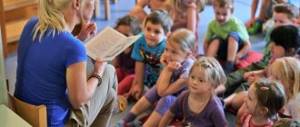The role of a teacher-psychologist in preschool educational institutions
The educational standard includes various areas of the comprehensive development of children and assumes psychological support from the teacher. A specialist in this area solves the following tasks:
- Promotes the development of intellectual abilities and personal growth of children at different stages of personality development.
- Helps students strengthen mental health, form their own “I” and learn to communicate with peers.
- Gives the child the opportunity to choose games and objects that correspond to his abilities and inclinations.
- Provides the same conditions for full development to all students, regardless of the level of their mental and physical capabilities.
The responsibilities of a teacher-psychologist include conducting correctional and developmental classes within the framework of the Russian educational program, taking into account the capabilities of age groups. At the same time, they should take place in a relaxed atmosphere, be accessible and arouse interest. That is why it is so important to organize a full-fledged subject-development environment in the office of a teacher-psychologist using the appropriate equipment.
Project of an office for a teacher-psychologist in a kindergarten
PEDAGOGICAL DESIGN – PROJECT of an office of a teacher-psychologist of a preschool educational organization.
(Pictures for the project were selected on the Internet and display a specific element described in this project.) Feasibility of the project. Within the framework of modern trends in the development of Russian preschool education, different options for creating a developing subject-spatial environment are possible, provided that age and gender specifics are taken into account for the implementation of the general education program (Methodological recommendations for teaching staff of preschool educational organizations and parents of preschool children “Organization of developing subject-spatial environment in accordance with the federal state educational standard of preschool education. Methodological recommendations for teaching staff of preschool educational organizations and parents of preschool children / O.A. Karabanova, E.F. Alieva, O.R. Radionova, P.D. Rabinovich, E. M. Marich. - M.: Federal Institute for Educational Development, 2014. - 96 p."). In accordance with the Federal State Educational Standard of preschool education, the subject environment must provide and guarantee: • protection and strengthening of the physical and mental health and emotional well-being of children, as well as respect for their human dignity, their feelings and needs, to form and maintain positive self-esteem, including when children interact with each other and in team work, confidence in their own capabilities and abilities; • maximum realization of the educational potential of the Organization’s space, as well as materials, equipment and inventory for the development of preschool children in accordance with the characteristics of each age stage, protection and promotion of their health, taking into account the characteristics and correction of deficiencies in their development; • construction of variable developmental education, focused on the possibility of children freely choosing materials, types of activities, participants in joint activities and communication, both with children of different ages and with adults, as well as freedom in expressing their feelings and thoughts; • creating conditions for daily work activity and motivation for continuous self-improvement, professional development of teaching staff, as well as assistance in determining their own goals, personal and professional needs and motives; • openness of preschool education and involvement of parents (legal representatives) directly in educational activities, providing their support on issues of children’s education, upbringing, protection and promotion of their health, as well as support for educational initiatives within the family; • creation of equal conditions that maximally facilitate the implementation of various educational programs in preschool education for children belonging to different national, cultural, religious communities and social strata, as well as having different (including limited) health capabilities. The goal of the project: to develop a specialized office for a teacher-psychologist, as one of the conditions for the work of a preschool educational institution in line with the development of modern preschool education, meeting the functional requirements and principles of organizing a subject-development environment in accordance with the Federal State Educational Standard for Preschool Education. Project objectives:
• development of an architectural and artistic concept for the office;
• zoning of the office in accordance with the Federal Regulations on the office of a teacher-psychologist, modern trends in the development of education and psychological and pedagogical science, functional requirements and principles of organizing a subject-specific environment; • methodological provision of the office with traditional and modern psychodiagnostic and correctional and developmental materials. Implementation period:
1 year. Responsible: MADOU administration, educational psychologist, builders, suppliers.
Stages:
I preparatory: • study of the functional requirements and principles of organization of a modern preschool educational institution; • study of design solutions for the psychologist’s office in a preschool educational institution (design of walls, curtains, furniture); • access to the site under construction, meeting with the builders (discussion of the color scheme of the walls); • study of modern trends in education in the Russian Federation, psychological and pedagogical science and the practice of preschool psychology. II main: • development of the architectural and artistic concept of the office; • coordination of the concept with the administration of the preschool educational institution; • zoning of the office in accordance with the Regulations on the office of a teacher-psychologist and modern trends in the development of education and psychological and pedagogical science, functional requirements and principles of organizing a subject-oriented environment; • methodological provision of the office with traditional and modern psychodiagnostic and correctional and developmental materials (search for suppliers, interaction with the head of the preschool educational institution, interaction with the deputy head of the ACh) III final: • testing the functionality of the premises;
• examination of the PRS in accordance with the principles of organization and functional requirements; • making adjustments. Contents of the project.
Architectural and artistic concept.
The place where the psychologist conducts an appointment is a kind of face of the specialist, reflecting him as a person and a professional.
A trusting environment that helps a client who has applied for psychological help to discuss the psychological problems that concern him without undue anxiety - this is what a psychologist needs to achieve when choosing the interior design of an office.
The design of walls, windows, floors and doors should be given close attention. It is recommended to arrange everything so that visitors feel as comfortable as possible. Color scheme, lighting, chair upholstery, flooring or carpet, compositions of indoor plants, wall panels, paintings - elements that should be selected in accordance with the psychological impact you want to achieve. It is recommended to stick to soft, pastel colors and diffused light. Having studied the recommendations of experts on the psychology of color and the effect of color on humans, we came to the choice of light olive (pastel yellow-green) wall color in combination with white, yellow and darker olive color textiles (upholstery, sofa cushions, curtains). These colors, according to experts, belong to the category of static colors, capable of balancing, calming, distracting from exciting stimuli; they are also renewing and liberating. It is better to choose a soft covering for the floor. The carpet can be chosen to match the furniture (dark beige or coffee with milk) or with a color combination: beige, brown, olive, yellow. It is not recommended to use more than three colors in a room, helping to create a favorable atmosphere to relieve psycho-emotional stress and relax both children and adults. It’s a good idea to use plants or flower arrangements in your office. Paintings and wall panels will complement the decor.
Windows must be decorated in a classic style.
Textiles should be chosen in milky or white tones with a matte texture; they can be shaded with tiebacks to match the walls (or a little darker; pillows for upholstered furniture can be made to match the tiebacks, diluting them with other shades: dark orange, dark yellow, dark green). The office needs the ability to darken (at least partially, since bright sunlight can interfere with work). Office zoning. For full-fledged work, the office must have the following zones: 1. zone of organizational and methodological activities and initial reception;
2. consultation area; 3. zone of diagnostics and individual work; 4. zone of privacy and relaxation; 5. group play therapy area; 6. reception waiting area (hall). 1. Area of organizational and methodological activities and initial reception.
Exactly 50% of a teacher-psychologist’s working time is spent on organizational and methodological activities. Organizing a specialist’s workspace is an important component in the design of the office of a teacher-psychologist at the MADOU. As a rule, this zone is combined with the zone for the initial reception of the client (parent, teacher).
This area is equipped with a comfortable and wide desk/computer desk, an office chair for a specialist and two chairs for the initial reception of clients; necessary office equipment (computer/laptop with Internet access, MFP, speakers), office supplies, as well as a platinum cabinet for a specialist and client, a mirror. Also, the area of organizational and methodological activities includes: • a safe (for storing information containing data on the personalities of clients); • cabinets for storing teaching materials; • documentation (normative, special, reporting, organizational and methodological); • literature and printed publications to improve the scientific and theoretical level and professional competence; • programs for processing and analyzing data obtained as a result of correctional and diagnostic activities.
2. Consultation area.
The psychological counseling area should encourage the client to talk. This is a cozy corner consisting of a mini-sofa (for parents, teachers) and an armchair (for a specialist) and, as a rule, a coffee table.
3. Diagnostics and individual work area.
In the area of individual work, diagnostics of the cognitive and emotional-volitional spheres of the child is carried out at the request of the parent, and individual (subgroup) correctional and developmental classes are conducted, including classes using the biofeedback method (feedback-health, IBIS), art -therapeutic technologies, sand therapy.
Equipment:
• Furniture for classroom work (table, chairs); • Laptop (for biofeedback therapy, computer diagnostic and development programs, multimedia boards); • Multimedia board (for the implementation of biofeedback therapy, developmental programs, demonstrations, relaxation); • Case of a practical psychologist (a set of materials and techniques for preventive, diagnostic and correctional work, for example, “Lily’s Suitcase” or Semago); • A suitcase of techniques for identifying the level of development of the child’s emotional-volitional, regulatory and cognitive spheres; • Computer diagnostics of differentiation of the child’s emotional sphere “Houses” (Methodology by O.A. Orekhova, IMATON) for psychotherapy to predict difficulties in the development of the emotional sphere and develop correction programs for the personal characteristics of children; • Luscher color test to assess the psycho-emotional state and level of neuropsychic stability; identifying intrapersonal conflicts and persons prone to depressive states and affective reactions; • Wechsler's technique for determining the level of intelligence; • SAT technique for diagnosing the emotional and personal sphere of a child (leading needs and motives, features of the child’s perception and attitude towards parents (including parents as a married couple), features of the child’s relationship with siblings, the content of intrapersonal conflicts as a consequence of frustration of the child’s leading needs , features of defense mechanisms as ways to resolve internal conflicts, aggressive fantasies, fears, phobias, anxieties associated with situations of frustration, dynamic and structural features of the child’s behavior among peers); • HAND test to study the level of aggressiveness; • A set of PMPc methods for different age groups; • Material for sensory development (PERTRA) • Handouts for children; • A set of toys and board games (balls, dolls, pyramids, cubes, lotto, dominoes, matryoshka), • A set for children's creativity (building materials, construction sets, plasticine, paints, colored pencils, felt-tip pens, paper, glue, etc. ); • Table and set of toys for sand therapy.
4. Area of privacy and relaxation.
A privacy zone is a place where a child can take a break from the noise, be with his thoughts, where you can talk to him and diagnose his emotional sphere and the sphere of communication with his immediate environment. A place where a child can open up and share his problems, relieve psycho-emotional and physical stress. In the relaxation zone, a teacher-psychologist can work with the child’s muscle tension, give a massage and teach self-massage (using neuropsychological correction technology). This area should be visually limited in some way (folding screen on wheels, voile curtains, see fig.), have a comfortable place where you can sit in a semi-lying position, soft pillows, objects of visual relaxation (bubble column, starry sky , projections on a multimedia board), audio relaxation, balls and rollers for massage and self-massage, “tactile babies”. Alternative lighting is welcome (twilight, changing the color of lighting using the “Spectrum” light gun).
5. Group play therapy area.
The area for conducting children's play training aimed at developing the emotional and communication spheres should be located on a soft surface and be spacious enough for exercises with 6-8 children.
For group lessons with children, it is necessary to set up an emotion corner, with the help of which children will determine the emotional states of themselves and their peers.
We need chairs for conversations in a circle (9 pieces), individual gymnastic mats (9 pieces), modules for large collective buildings (Tactile construction set “Tower”).
6. Reception waiting area (hall).
In the hall in front of the specialists’ office, it is recommended to install an office mini-sofa for parents waiting for a specialist or child;
set up an information stand and post information with the work schedule and reception times for parents and teachers. Conclusion. We consider our project to be realistic and consistent with the requirements of modern psychological science and the practice of preschool education, as well as the requirements for organizing PRS in accordance with the Federal State Educational Standard for Preschool Education. Namely, the compliance of the design of the office of the teacher-psychologist of the preschool educational institution with the principles of organizing the PRS:
• information content;
• security; • accessibility; • variability; • multifunctionality, • pedagogical expediency; • transformability; • taking into account the main directions of children's development; • taking into account gender role specifics; • taking into account the zone of proximal development; and functional requirements of the PRS:
• The function of maintaining a unified educational space in conditions of content and organizational variability of preschool education. • The function of humanization of preschool education, focusing on the priority of universal human values, the life and health of the child, the free development of his personality in modern society and the state. • The function of protecting the child from incompetent pedagogical influences in the conditions • The function of variability in preschool education. • Function of increasing the efficiency and quality of preschool education. • Criteria-evaluative function.
We recommend watching:
Meditative exercise for teachers Psychological questionnaire for social adaptation of children to a particular subject Meditation. Recommendations for educational psychologist Prevention of deviant and delinquent behavior in schoolchildren
Similar articles:
Training on interaction with parents
Summary of correctional and developmental classes in a preparatory school group
Equipment for a psychologist's office in a preschool educational institution
The effectiveness of a psychologist’s work largely depends on the conditions of the room in which classes with children are conducted. This should be a separate office, located in a place accessible to children and parents. Thoughtful design and necessary equipment also play an important role.
The subject-development environment in the room should be organized in such a way that each child does not experience psychological discomfort and constriction. Only under such conditions will pupils be able to easily master all cognitive processes and develop speech. Availability and security of the environment are also important.
The psychologist’s office must contain technical means, visual demonstration aids and sports equipment to ensure children’s physical, playful and creative activity. It is also desirable to create conditions for research activities using available materials, for example, sand and water.
Particular attention should be paid to the design of the interior space: if possible, make it bright and attractive, decorate it with interesting toys and pictures. The size of the room should allow for group classes with 5-7 children.
It would be correct to divide the office into functional zones that do not have clear boundaries, smoothly transition into each other and allow you to solve the following tasks:
- Initial reception and advisory work.
- Conducting classes of a correctional and developmental nature.
- Relaxation and elimination of emotional stress.
- Workplace of a teacher-psychologist.
- Zone of development of the emotional sphere.
Psychologist's office in kindergarten
The psychological room in a kindergarten is decorated in bright colors so that the child does not feel the difference between the usual play area and the place where correctional work takes place. The office should be adjusted to the full range of work, which usually includes:
- the waiting area;
- conversation area;
- play therapy area;
- rest zone;
- specialist’s personal space zone.
In kindergartens, psychologists' offices usually accommodate several children at once, up to 12 people for group training.
For obvious reasons, the design of a psychologist’s office in the garden is becoming divided. The first, advisory zone provides a cozy, relaxed atmosphere. More suitable colors are beige and light brown. You can place a small coffee table between the seats.
The correctional and developmental area should be equipped for games, activities and training. That is, it is necessary to have desks, a blackboard, a creative corner, and a place to store toys and tools. This zone may be particularly colorful and bright. Bright objects will arouse children's interest and have a positive effect on their activity.
The relaxation area can be equipped in pastel, soothing colors so that children can relax after intense play work.
The personal space of a child psychologist can be designed to suit his taste or in the form of a standard work environment, allowing him to concentrate on professional responsibilities.
This is what the correct design of a child psychologist’s office looks like.
Initial reception and advisory work area
The equipment of this zone involves a list of standard items, which includes: a desktop with a computer, diagnostic equipment and a rack for it, teaching aids and printed material, game sets, exercise books, and an information stand.
As for the interior design, it would be preferable to cover the floor with a rug or carpet, and paint the walls in soothing pastel colors. Comfortable upholstered furniture with comfortable backs and seats contributes to a trusting atmosphere.
Zone of correctional and developmental activities
The necessary types of equipment for this zone are:
- Colorful children's tables for activities, which can have a very unusual shape, adjustable legs.
- Comfortable children's chairs with soft seats covered with fabric or leatherette.
- Table and floor easels, including double-sided and mirrored options, and magnetic boards.
- Developmental multifunctional sets that promote the formation of logic, perception, coordination of movements, etc.
Modern interactive equipment
The use of interactive equipment in preschool educational institutions is especially in demand these days. Sensory devices captivate children to gain new knowledge and skills and provide excellent results when conducting correctional and developmental activities. Equipment such as an interactive sandbox, an interactive panel, and an interactive floor allows teachers to stabilize the emotional state of children.
Decorating an emotional corner in a psychologist’s office
Venera Shaimardanova
Decorating an emotional corner in a psychologist’s office
Decorating an emotional corner in a psychologist’s office
The purpose of the emotional corner is to overcome the psychological disadvantage of preschool children.
Tasks:
- create a positive emotional atmosphere and create conditions for the child’s positive attitude towards elders and peers;
- create regular work on the development of the emotional sphere of children;
- cultivate friendly relations, promote the unification of the children's group.
The whole life of preschool children is subject to their feelings and emotions. It is still very difficult for them to manage their emotions. That is why children are much more likely to experience mood swings than adults. It is very easy to cheer them up, but it is even easier to upset or offend them, since they almost do not know themselves and cannot control themselves.
Emotions are a person’s mental excitement. Of course, emotions can be both positive and negative.
The work of a psychologist in a kindergarten is interesting and very exciting. I would like to share my own experience of working in a kindergarten.
Of course, our work involves working with the feelings of children, parents and teachers, but the main role is working with the emotions of children
. It is necessary to pay attention to how the child feels, and most importantly, find out the reason why he feels this way and be sure to help him cope with his negative feelings.
To overcome a child’s negative emotional state, it is necessary to create an environment for a favorable emotional climate in the children’s team, to create a visual and developmental environment.
Therefore, the need arose to create an emotional corner in your office, the creation of teaching aids, a card index of educational games, the creation of little world books, and the need arose to create emotional gnomes, which are very interesting to children for their clarity.
Everyone knows that all the feelings and emotions of a child are initially laid down in the family. Therefore, the idea arose to create dolls - Family, which are necessary when working with children during role-playing games.
Wall “In the world of emotions”
"Mood Corner"
The children are given the right to privacy, look at illustrations with pictures of different moods, reflect and choose the image that suits their mood.
"Gnomes"
“Dwarves” help children better understand the feelings and facial expressions of another person.
"Mirilki"
In the event of a conflict or clash, children resolve their dispute with the help of “Mirilka”.
Dolls "Family"
Children, with the help of “Family” dolls, play role-playing games. By watching children play, you can understand what is happening in the child’s family, what mood the hero of the game is in, how he gets out of this or that situation.
Benefits for the formation of the emotional sphere of children
Conclusion: The emotional corner interests children and helps them become aware of their feelings, the emotional states of other people, and teach children to cope with their emotions in acceptable ways.
Psychological relaxation zone
Here children and adults can relax, relieve accumulated fatigue and irritation, and restore their emotional background. The appropriate atmosphere will be created by soft carpeting, aromatherapy and a music center for playing calm, relaxing music.
Zone for the development of the emotional sphere
A psychologist’s office must have a corner for children where they can openly express their mood and evaluate the emotions of others. Children will easily learn to control their emotional state thanks to special means of self-knowledge:
- cozy mood corner;
- wall tactile gaming panel;
- colorful soft play module.
In addition, in the arsenal of a teacher-psychologist for the development of the emotional sphere there should be various games and aids:
- Game "World of Emotions".
- Set of cards "Emotions".
- Game "Journey to the World of Emotions".
- Constructor "Emotional development of the child."
- Game set with dice “World of Emotions”.
A favorite pastime of all children from an early age is playing with sand. It is in the sandbox that children gain their first experience of social contacts and experience various emotions. Therefore, it would be appropriate in the area for the development of the emotional sphere to have equipment and devices for playing with sand and water
Such a creative corner will have a beneficial effect on the emotional state of the children, will promote a good mood, eliminate aggression and psychological discomfort, and establish contacts with others. Playing with sand is especially recommended for hyperactive children. This kind of game makes them calmer, more balanced and more friendly. The structure of the sand promotes the development of fine motor skills, dexterity, dexterity and coordination of movements.
Equipping the office of a teacher-psychologist in a preschool educational institution in accordance with the standards of the Federal State Educational Standard is not a difficult task at all if you turn to professionals. The Edukid company is always happy to help in achieving the best correctional and developmental results. Contact us!
Psychologist's office at school
The design of a psychologist's office in an educational institution should create the effect of lightness as much as possible. The influence of the general environment is very important in pedagogical and psychological work with schoolchildren, because, as a rule, it is not very easy to position children in adolescence.
It is advisable to get rid of dark objects and dilute the interior with more cheerful shades: orange, yellow-green, lemon, olive, blue-green. It is not recommended to leave white walls; such a color subconsciously tires and makes you sad, unless it acts as a background for the rest of the rainbow details.
Before the age of 10, children perceive pinks, purples and reds more favorably. Dark, gray shades are extremely undesirable. For 11-12 year olds, green and blue colors are preferred. This helps to establish closer contact with children. For older children, blue and green are suitable. You can make yellow or orange the predominant color scheme.
It is also advisable to isolate the office from extraneous noise so as not to disrupt the conversational mood and the child is not distracted.
